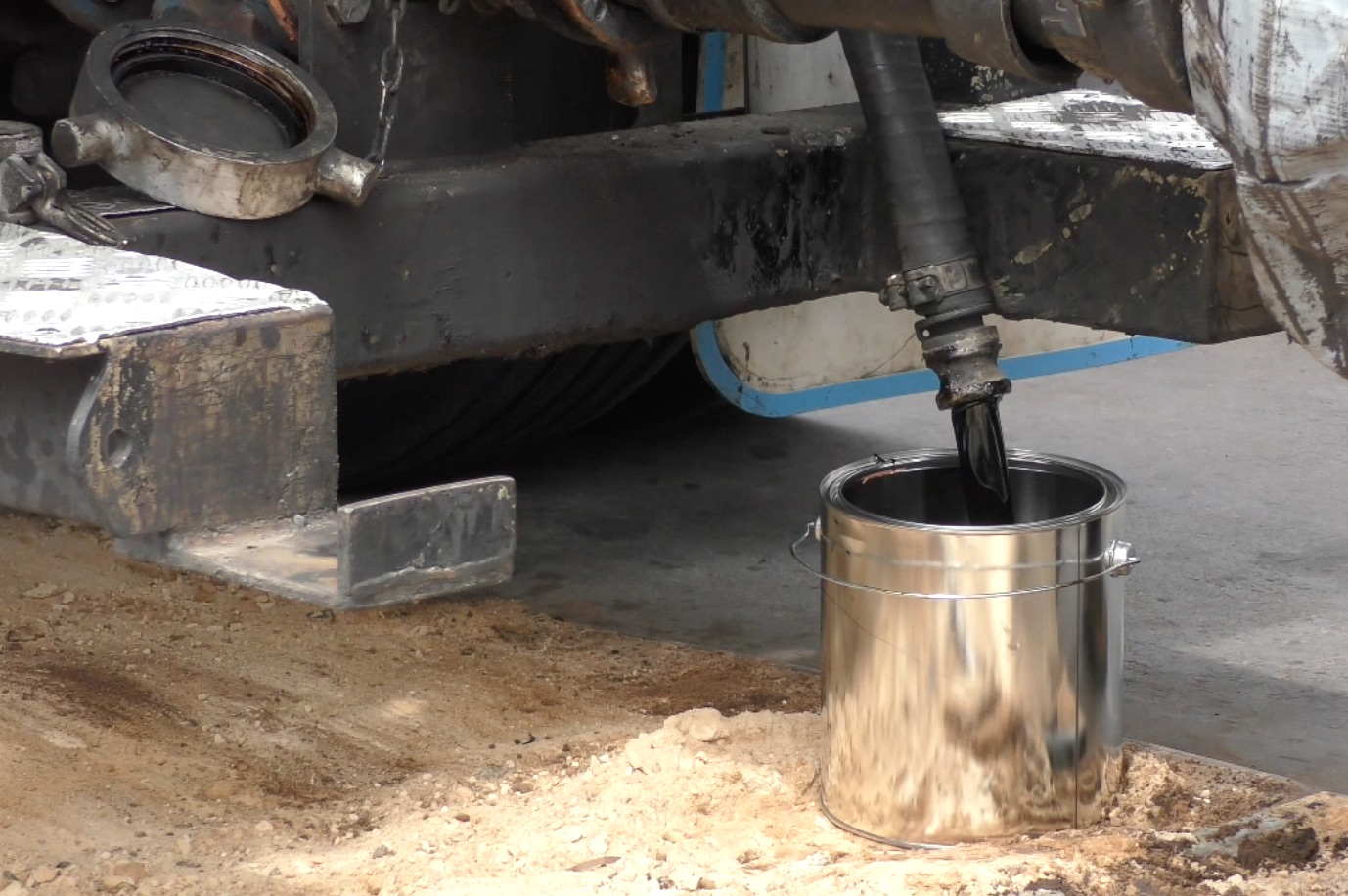Road agencies now require bitumen samples to be taken at the point of delivery – a potentially hazardous activity. This is why Viva Energy, together with other bitumen suppliers and the cartage industry, is working to ensure that if it’s going to be done, it will be done safely.
Viva Energy’s Bitumen Technical Director Dr Nigel Preston talks about the guidelines his team has been formulating in conjunction with the Australian Asphalt Pavement Association (AAPA) for the safe sampling of bitumen from road tankers.

Sampling bitumen safely
Sampling hot bitumen from road tankers, while potentially hazardous, has increasingly become a requirement due to road authorities wanting to check on the physical properties of bitumen when it’s delivered to site.
Bitumen is handled at high temperatures, typically between 165 and 190 degrees centigrade so adequate controls need to be put in place to manage the risks associated with the taking of samples. At points of loading and unloading bitumen tankers, it is normally the tanker drivers who are engaged in these activities and they are responsible for wearing the required PPE during these operations. There are specific and strict requirements for the drivers who must wear:
- Safety boots.
- Full length cotton and fire resistant overalls.
- Heat resistant gauntlet style gloves.
- Balaclava or neck apron.
- Full face visor.
- Safety helmet.
Full PPE must be also be worn when taking bitumen samples from road tankers.
The sample should be taken at some time around the midpoint of the tanker discharge to ensure that a representative sample of bitumen is obtained. This involves interrupting the unloading process so that when the sample is taken the bitumen is allowed to flow under gravity into the sample tin.
Initially a few litres of bitumen must be allowed to drain into a bucket to clear the sample line and valve of any non-representative product. Once this action is complete the bucket can be removed and replaced with a sample tin which should be approximately 4 litres capacity with a circular entry aperture of at least 100mm. The sample tin must be placed on level ground immediately below the sampling valve and filled to around two thirds full. The filled sample tin can then be placed to one side and allowed to cool. The process should be repeated to take a second sample in order that a duplicate is available.
Clear unambiguous labelling of the sample is essential. The label needs to state:
- The date of sampling.
- The grade of bitumen.
- The location of sampling.
- The batch number of the bitumen production.
At the end of the sampling process the sample tin lid should be secured on the sample tin and the sample label be clearly visible and clean. The sample can then be made available to the site superintendent or placed in the drivers’ toolbox on the road tanker.
To assist in clarifying the process, Viva Energy in association with AAPA and Fulton Hogan, have put together a short film showing the overall sampling process and illustrating best practice. This will be accompanied by an Austroads Worktip providing guidelines on obtaining representative samples of hot bitumen from road tankers.
Viva Energy sees these guidelines as a great safety initiative for the Bitumen Industry and are proud to be leading the developments.
Interested in learning about Viva Energy’s bitumen solutions?
Find out more today